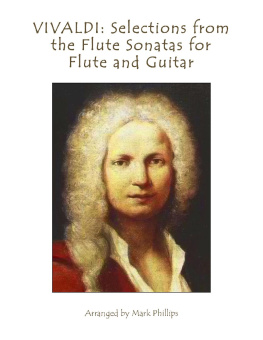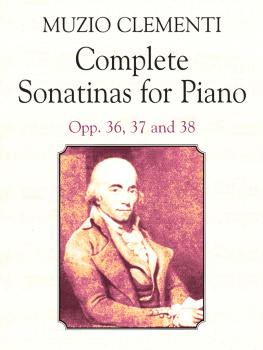Also by Melvin Berger
GUIDE TO CHAMBER MUSIC
A N A NCHOR B OOK
PUBLISHED BY DOUBLEDAY
a division of Bantam Doubleday Dell Publishing Group, Inc.
666 Fifth Avenue, New York, New York 10103
A NCHOR B OOKS , D OUBLEDAY , and the portrayal of an anchor are trademarks of Doubleday, a division of Bantam Doubleday Dell Publishing Group, Inc.
Library of Congress Cataloging-in-Publication Data
Berger, Melvin.
Guide to sonatas: music for one or two instruments / Melvin Berger.1st Anchor Books ed.
p. cm.
Discography. p.
1 Sonata. I. Title
ML1156 B46 1991 90-982
784.183dc20
MN
eISBN: 978-0-307-75488-2
Copyright 1991 by Melvin Berger
ALL RIGHTS RESERVED
v3.1
Contents
Preface
S ONATAS appear on practically every recital program. Piano recitals, violin and piano recitals, cello and piano recitals, and virtually every other solo and accompanied instrumental program contains at least one sonata. This book strives to help music lovers derive the maximum pleasure and satisfaction from their listening experiences by providing vital background information and helpful discussions and analyses of several hundred works in this form. The range of music covered stretches from Corelli to Copland, and includes all solo instruments and pairs of instruments.
The sonatas are arranged alphabetically by composer. For those composers who wrote only a limited number of sonatas, the works are considered in chronological order. For those who wrote a number of sonatas for particular instruments, the instruments are listed alphabetically and the individual sonatas follow in order of composition.
The amount of space devoted to each sonata varies. The major worksthose that are published, recorded, and frequently performedreceive a full, in-depth discussion that establishes the historical and musical setting and presents the salient features of the music, including formal organization, musical content, and any extramusical associations. For compositions that are not central to the standard repertoire the discussion is, perforce, more limited.
Since this book aims to meet the needs of the general reader, as well as experienced concertgoers, record collectors, and performing musicians, technical terms are avoided wherever possible. Any unfamiliar words, along with brief explanations of such basic terms as sonata and sonata form, can be found in the Glossary.
A prominent sculptor was once asked how long it took him to complete a monumental sculpture. When he replied that it took sixteen months, the questioner expressed amazement, to which the sculptor responded, More accurately, it took fifty-two yearsand sixteen months!
Likewise, while it took me somewhat over two years to write Guide to Sonatas, I brought to this labor of love many years of study, including three degrees in music; an active career as a viola solo recitalist (with appearances in New York, London, Washington, Philadelphia, and elsewhere), chamber musician, orchestral player, and teacher; considerable experience as a writer and lecturer on musical subjects; and a lifelong addiction to concertgoing.
Obviously, any attempt to provide a comprehensive guide to the vast sonata repertoire in a book of manageable length presents many problems of selection. To ensure that I treat all the works that readers are likely to encounter, without overloading the book with obscure, infrequently performed compositions, I exchanged ideas with many leading performers, studied stacks of concert programs, and consulted many record and publisher catalogs. I incorporated all of this information into my own thoughts to prepare what I hope is a complete, balanced selection of entries. While I may have omitted certain composers or compositions that others consider essential, I can only say that every decision was made as carefully and objectively as possible.
Johann Sebastian Bach
Born March 21, 1685, in Eisenach, Germany
Died July 28, 1750, in Leipzig
A FTER being taught violin by his father and the keyboard instruments by an older brother, Bach served his musical apprenticeship in various minor German court positions. His first significant appointment was to the court of Duke Wilhelm Ernst in Weimar in 1708. Eight years later, because of growing disaffection with the duke and an offer to become Kapellmeister in the court of Prince Leopold of Anhalt-Cthen at a much higher salary (400 thaler per year as opposed to 250 thaler in Weimar), Bach submitted his resignation. The duke refused to accept the request and when Bach pursued the matter, he had him thrown in jail for too stubbornly requesting to leave! Bach spent nearly a month behind bars, composing all the while, before the duke relented, releasing the composer from imprisonment and from service at the court.
Bach arrived in Cthen at the end of 1717 and remained there until the spring of 1723 (when he accepted the final and most important position of his life, that of Cantor at Leipzigs St. Thomas church). It was here at Cthen that Bach composed all of his sonatas. The chief incentive came from his employer, Prince Leopold, a true music lover who was proficient on the violin, viola da gamba, harpsichord, and was a gifted singer as well.
An added stimulus to Bachs involvement with purely instrumental composition was that the religious services at Cthen were strictly Calvinist and therefore required little new, original music from the Kapellmeister. Consequently, between the musical interests of his patron and the limited demand for church music, Bach composed such outstanding works as the Brandenburg Concertos, the orchestral suites, Book I of The Well-Tempered Clavier, several concertos and, as we said, all of the sonatas during the six years he spent at Cthen.
In Bachs day, the term sonata did not refer to the later, standard three- or four-movement composition, with a first movement in sonata-allegro form. In effect, Bach understood the sonata simply to be a sound piecean instrumental work, as contrasted with a cantataa sung, or vocal, composition.
With virtually no exceptions, all of his sonatas are of the type known as sonata da chiesa (church sonata). In general, they tend to be serious and somewhat abstract works, a reflection of their origin as music suitable for performance in religious services. The sonatas usually contain four separate sections, or movements, so named because each one moves at a different speed. Almost always, Bachs sonatas start with a slow movement that has some of the character of an introduction. It is followed by a fast, bright movement, often the most important one of the composition. The third movement, which is slow in tempo, is usually the most melodic, sometimes with a touch of pathos. And the fourth movement is the happy endinga fast, joyous, high-spirited conclusion to the entire piece.
In addition to his sonatas, Bach composed a number of suites and partitas for one or two instruments. These works are closely akin to the sonata da camera (chamber sonata) and differ from the sonata da chiesa type. The sonata da camera, as well as the suites and partitas, consist of a flexible sequence of movements in familiar dance rhythms and tend, in most cases, to be somewhat light in style.
The keyboard instrument in Bachs duo sonatas is commonly called either a clavier (literally keyboard) or cembalo (from


















